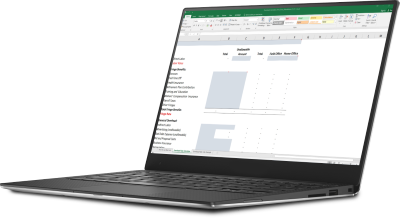If your architecture or engineering firm is looking into working on state department of transportation awards or other federally funded contracts, you may have heard the term “overhead rate” or “indirect cost rate.”
Calculating a rate for the first time can seem daunting. No worries. We’re here to answer some FAQs related to FAR overhead rates and audits.
What Is a FAR Overhead Rate?
Firms are typically required to calculate an overhead rate if they’re working on a government project. This includes working as a subcontractor on a government project, and working on projects for state departments of transportation.
An overhead rate is the ratio of allowable indirect costs to total allocable direct labor costs. The rate represents the percentage of general expenses that consultants can bill to government agencies. These costs are not directly accountable to a cost object. These rates need to be compliant with the Federal Acquisition Regulation (FAR).
The FAR is the principal set of rules regarding government procurement for the U.S. federal government. FAR Part 31 contains the cost principles and procedures for the pricing of contracts and subcontracts and the determination and negotiation of costs.
What Is a FAR Overhead Audit?
23 U.S.C. Section 112(b)(2)(C) requires contracts for engineering services to be performed and audited in compliance with the cost principles contained in Part 31 of the Federal Acquisitions Regulation. Because state department of transportation jobs can include both state and federal money, many state departments of transportation also require overhead rates to be audited.
Here’s how it works:
Your management team prepares the Schedule of Indirect Costs in accordance with accounting practices prescribed by Part 31 of the Federal Acquisition Regulation (FAR). The schedule is not prepared under Generally Accepted Account Principles (GAAP).
Then, the auditor audits the Schedule of Indirect Costs and the related notes to ensure it is not materially misstated. The auditor conducts the audit in accordance with auditing standards generally accepted in the U.S. and the financial audit standards contained in the Government Auditing Standards issued by the comptroller of the U.S.
The auditor also issues a report on internal control over financial reporting and on compliance and other matters based on an audit performed in accordance with Government Auditing Standards.
The auditor also utilizes the AASHTO Audit Guide as clarification. The guide, published by the American Association of State Highway and Transportation Officials, assists users in understanding terminology, policies, procedures and audit techniques. The guide provides only general guidance and is not meant to and cannot supersede the FAR or other laws.
How Is the Audited Overhead Rate Used?
The rates can be used for a number of purposes, including:
- Submission of proposals to different government agencies (federal, state, local, etc.).
- Billings on cost plus contracts. Cost plus contracts allow companies to bill for costs plus the approved overhead rate. The higher the rate, the more the company can get paid for their contracts.
Need Help?
If you need guidance on your overhead rate structure, we can help. Contact us online or call 800.899.4623.


